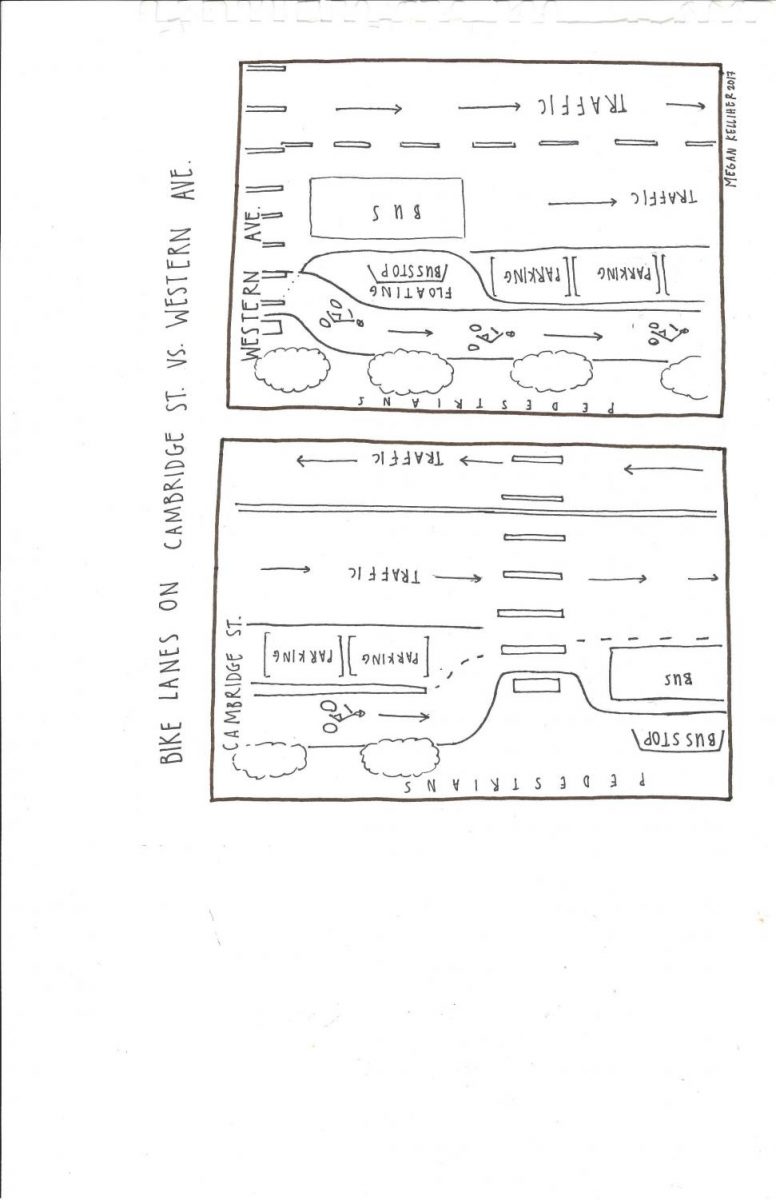Cambridge Street Protected Bike Lanes Only Benefit Bikers
September 27, 2017
A city as bike-friendly as Cambridge needs proper facilities to guarantee the safety of its cyclists. It makes perfect sense to add protected bike lanes to Cambridge Street to improve bike commutes…but this is not the way to do it. The new protected bike lanes on Cambridge Street are a mess, providing bikers with a marginally easier ride at the sacrifice of everyone else’s time and safety. The following is a master list of what other commuters now have to go through due to the new bike lanes.
Cars
Since the bike lanes and the unnecessarily wide medians between them and the parking spaces take up so much extra room, Cambridge Street is now much narrower. From what I have observed in the morning peak period, this has led to more traffic jams from simple actions such as someone making a left turn.
People Parking
Now that the road is so much narrower, there is less room to make parking maneuvers. This is another cause of traffic on this already congested thoroughfare. Also, whereas the previous setup allowed drivers to get out of their cars without impeding traffic (as long as they looked out for incoming bicyclists) since there was room for cars to go around, now there’s no gap between the parked cars and the road. Someone needs to get out? Traffic jam!
Buses
If the narrow road is a problem for cars, then it’s a catastrophe for buses. Watching these wide vehicles swerve their way down Cambridge Street, even poking out into the other lane of traffic, is nerve-wracking. Plus, what if a bus swerves out too far and oncoming traffic has to stop? Time for another traffic jam!
Trucks
It has never been easy for trucks to make deliveries on Cambridge Street, but now the operation has an extra layer of complexity. During the morning rush, I observed a truck parked at a bus stop, forcing transit vehicles to board from the street. And remember how narrow the road is now? Surprise, it’s another traffic jam!
Bikers
Yes, even bikers’ problems have not entirely been solved. Despite the illusion of a perfectly safe and isolated bike lane, it is smashed whenever a bus pulls over to make a stop, whenever a truck has to park up to load, or whenever a hapless passenger, not used to having to look out for cyclists, slams out their door onto an innocent old lady just trying to bike to her grandson’s house.
Granted, these lanes are only a trial, and there is still time for the concept to be improved. In Cambridge, the best example of protected bike lanes done right is Western Avenue, near Central Square. Here, the bike lanes are part of the sidewalk infrastructure, meaning there is no interaction with the road at all. Floating bus stops (bus stops that come out to meet the travel lane) allow cyclists to pass behind stopped buses. Transit is sped up because vehicles don’t have to pull over. Sidewalk amenities like trees and wastebaskets protect pedestrians from speeding bicycles. It’s a win for everyone. Cambridge Street can be like Western Avenue if the city is willing to invest the money. Bicyclists would get a truly protected lane. Floating bus stops would improve speed on the 69 bus. And though the road would still be narrower than it used to be, those annoying wide medians could be eliminated, freeing up at least a marginal amount of space for travel lanes. I’m all for protected bike lanes in Cambridge, but unless they’re done correctly, they impede a lot more commutes than they help.
This piece also appears in our September print edition.











